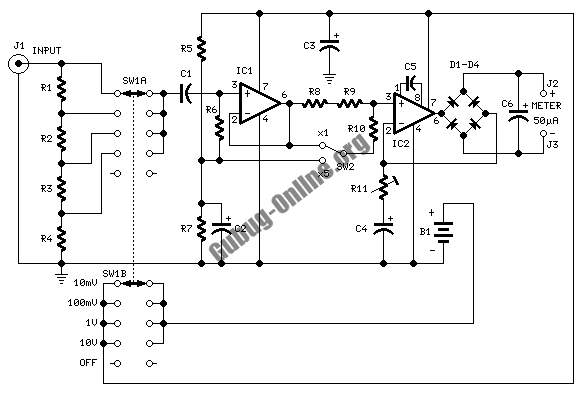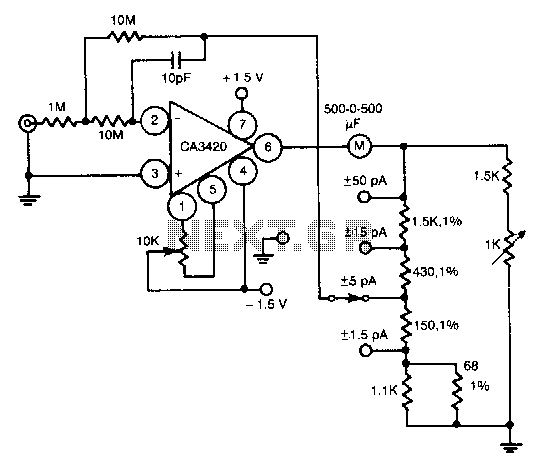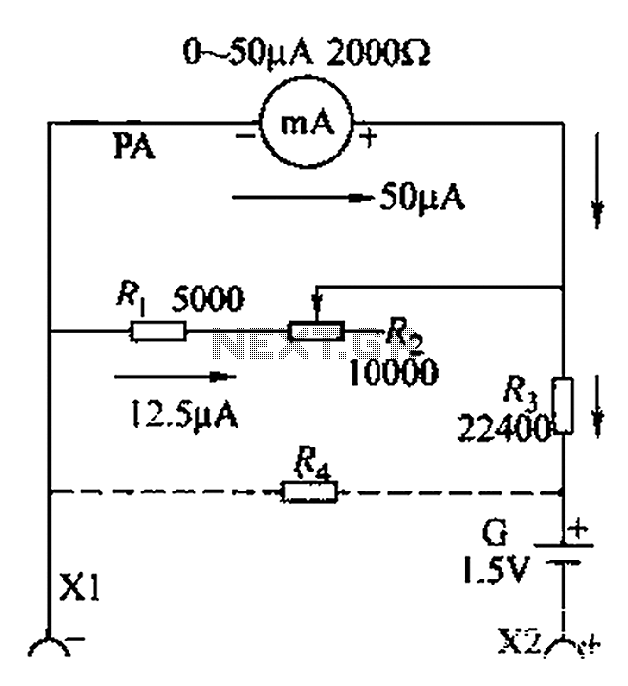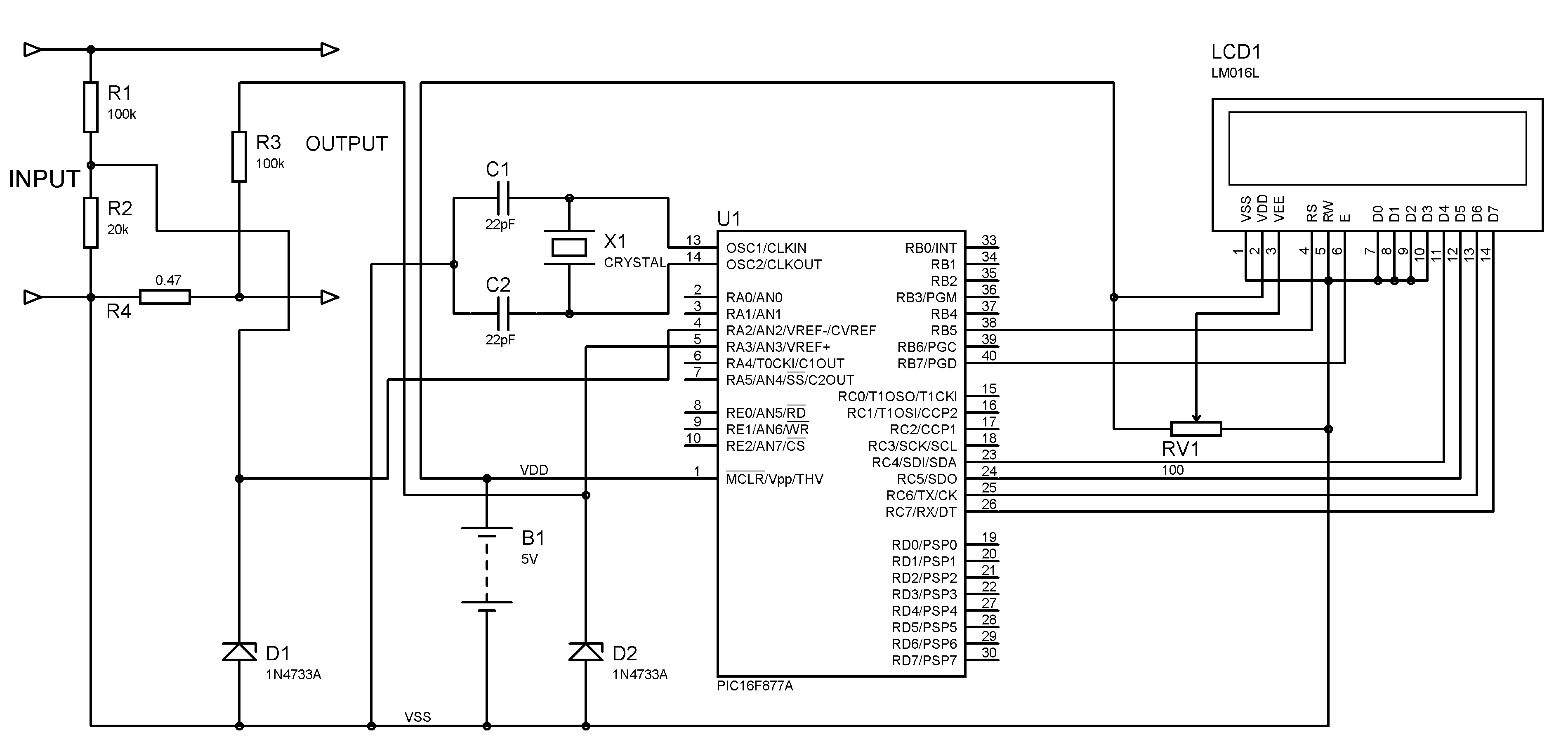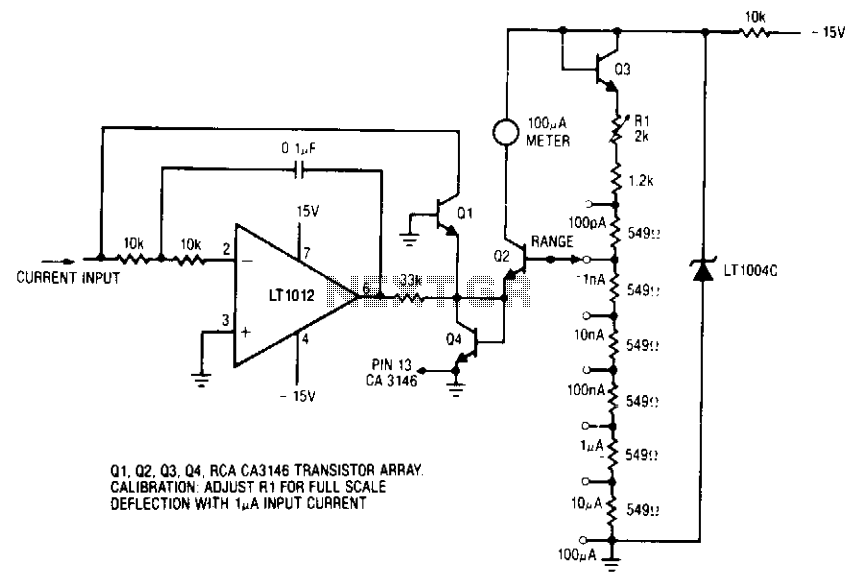
Pico ammeter
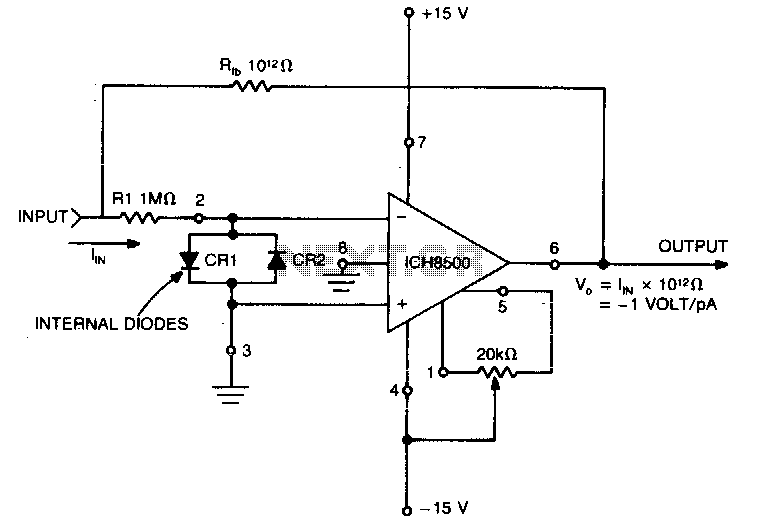
A highly sensitive picoammeter (−1 V/pA) utilizes an amplifier configured in the inverting or current summing mode. It is crucial to eliminate stray currents from entering the current summing mode. The circuit stabilizes to within 1% of its final output voltage approximately 5 seconds after a step function of input current is applied. Additionally, internal diodes CR1 and CR2, along with an external resistor R1, are employed to safeguard the input stage of the amplifier from voltage transients.
The picoammeter circuit is designed to measure extremely low currents with high precision. The amplifier's inverting configuration allows for the conversion of input current to a corresponding output voltage, where a current of 1 picoampere results in a voltage change of −1 volt. This high sensitivity requires careful circuit design to minimize noise and interference, particularly from stray currents that could affect accuracy.
The stabilization time of approximately 5 seconds indicates the circuit's response characteristics, which are critical for applications that involve rapidly changing input currents. During this period, the output voltage will approach its final value, allowing for reliable measurements once equilibrium is achieved.
Protection against voltage transients is a vital aspect of the design. The inclusion of diodes CR1 and CR2 serves as a clamping mechanism, preventing excessive voltage levels from damaging the amplifier's input stage. Resistor R1 works in conjunction with these diodes to limit the current flow during transient events, ensuring that the circuit operates within safe parameters.
Overall, the design considerations for this picoammeter emphasize precision, stability, and protection, making it suitable for applications in scientific research, semiconductor testing, and other fields requiring accurate low-current measurements.A very sensitive pico ammeter (— 1 V/pA) employs the amplifier in the inverting or current summing mode. Care must be taken to eliminate stray currents from flowing into the current summing mode. It takes approximately 5 for the circuit to stabilize to within 1% of its final output voltage after a step function of input current has been applied
The internal diodes CR1 and CR2 together with external resistor Rl to protect the input stage of the amplifier from voltage transients.
The picoammeter circuit is designed to measure extremely low currents with high precision. The amplifier's inverting configuration allows for the conversion of input current to a corresponding output voltage, where a current of 1 picoampere results in a voltage change of −1 volt. This high sensitivity requires careful circuit design to minimize noise and interference, particularly from stray currents that could affect accuracy.
The stabilization time of approximately 5 seconds indicates the circuit's response characteristics, which are critical for applications that involve rapidly changing input currents. During this period, the output voltage will approach its final value, allowing for reliable measurements once equilibrium is achieved.
Protection against voltage transients is a vital aspect of the design. The inclusion of diodes CR1 and CR2 serves as a clamping mechanism, preventing excessive voltage levels from damaging the amplifier's input stage. Resistor R1 works in conjunction with these diodes to limit the current flow during transient events, ensuring that the circuit operates within safe parameters.
Overall, the design considerations for this picoammeter emphasize precision, stability, and protection, making it suitable for applications in scientific research, semiconductor testing, and other fields requiring accurate low-current measurements.A very sensitive pico ammeter (— 1 V/pA) employs the amplifier in the inverting or current summing mode. Care must be taken to eliminate stray currents from flowing into the current summing mode. It takes approximately 5 for the circuit to stabilize to within 1% of its final output voltage after a step function of input current has been applied
The internal diodes CR1 and CR2 together with external resistor Rl to protect the input stage of the amplifier from voltage transients.
